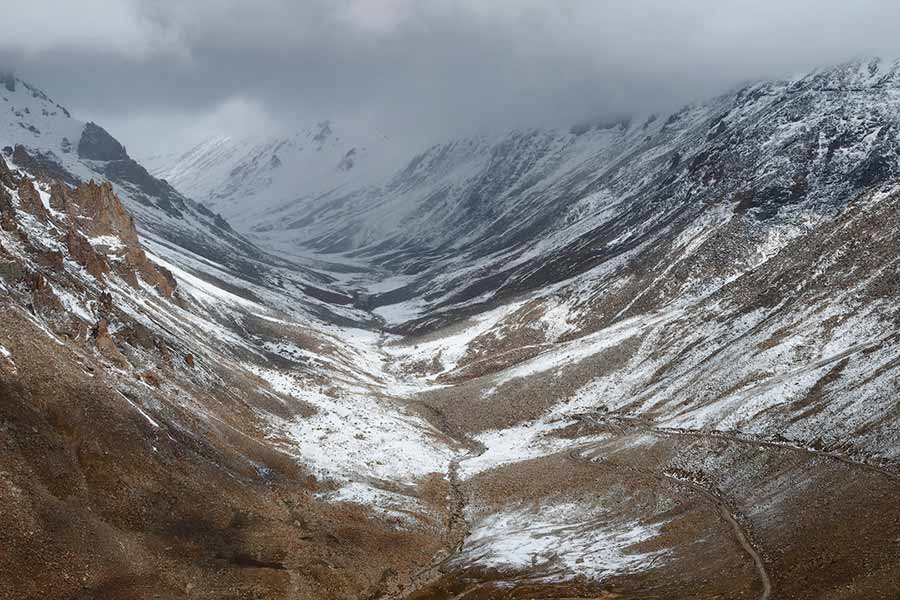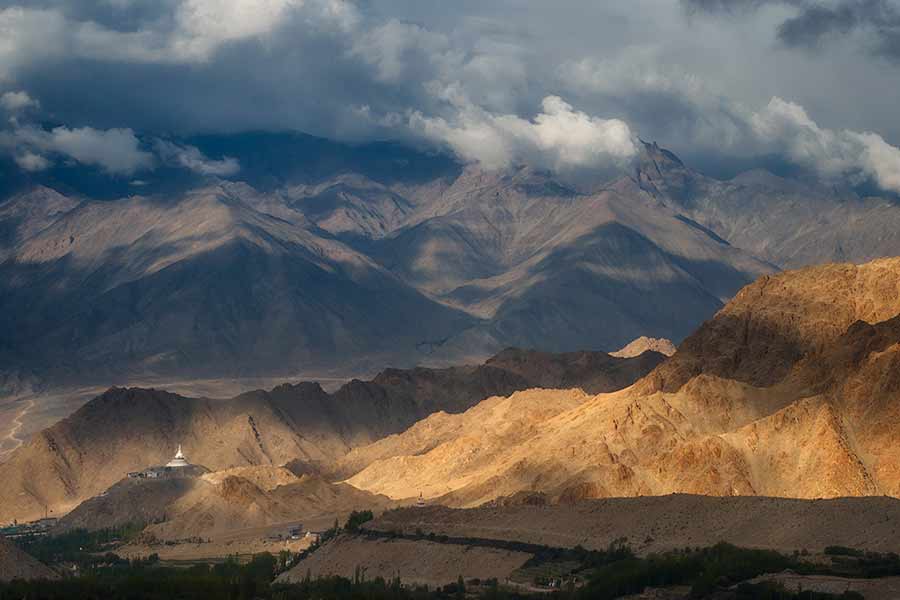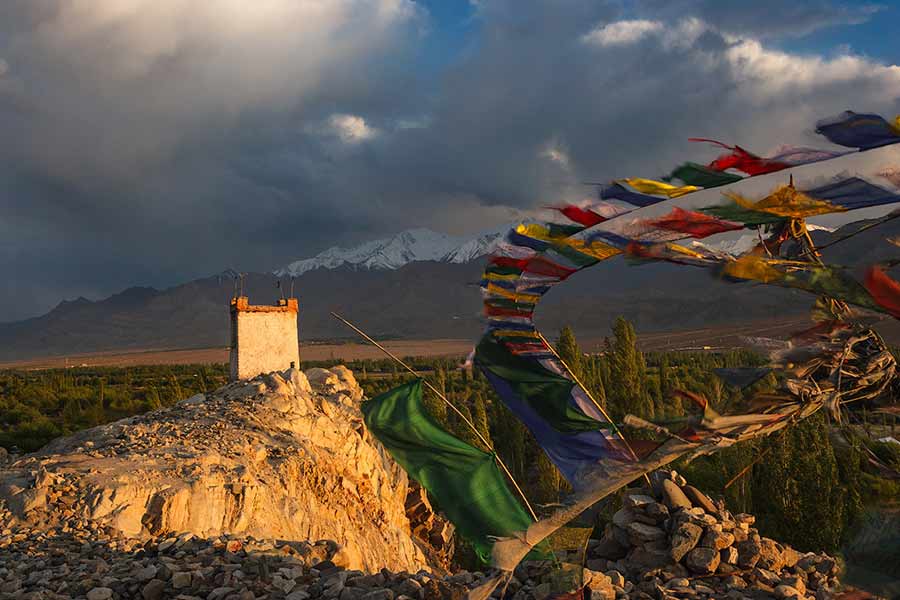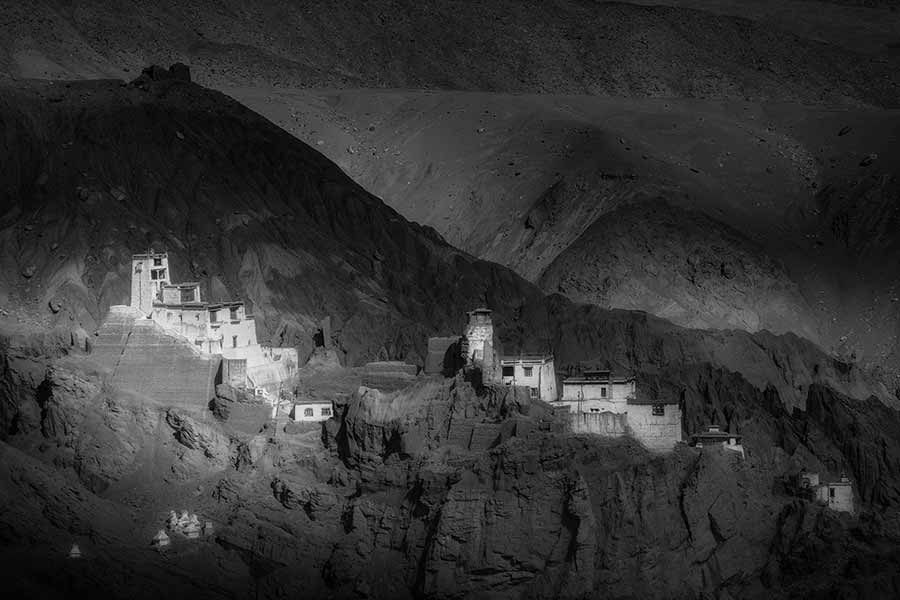Ladakh - Desert and Lakes, June to September
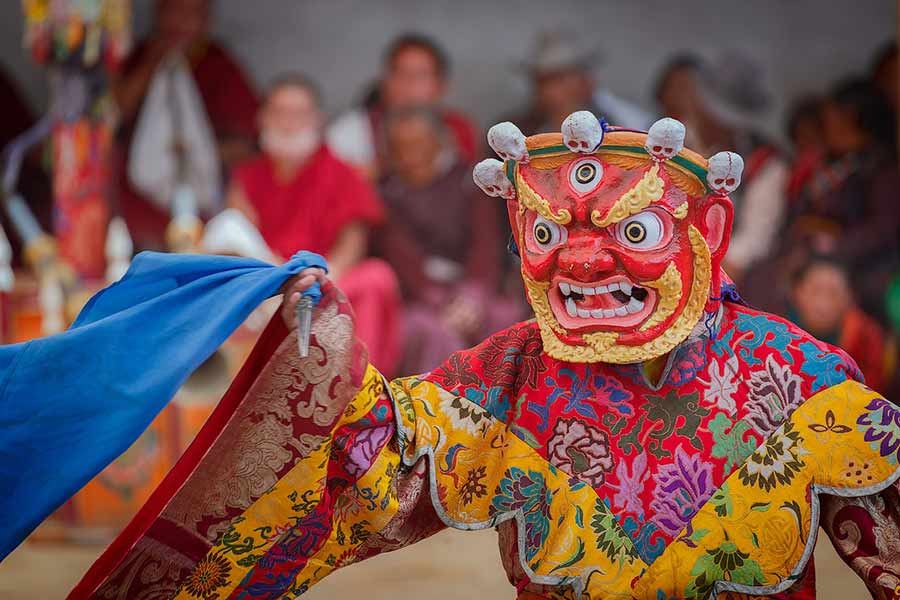
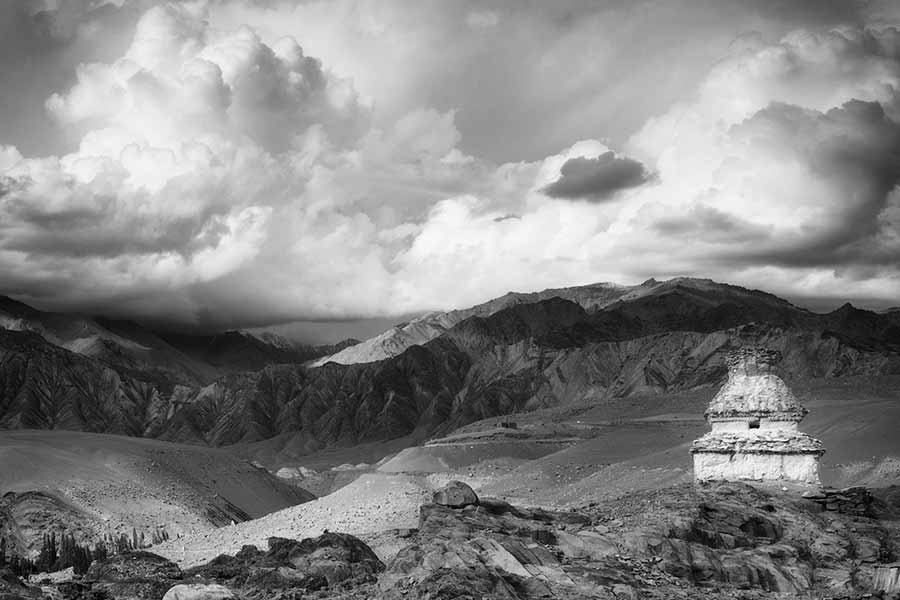
Want more details
Introduction
The Ladakh Desert and Lakes photo tour is an exploration of one of India’s most distinctive landscapes and cultures. Ladakh is usually described as a high-altitude desert but it much more than just that. It is a land of high passes, lakes the color of turquoise, isolated monasteries, ancient rituals and, of course, a fantastic cold desert of monumental beauty. It is situated at the crossroads of High Asia with the Great Himalayas to its south and the eastern Karakorum mountains to it north. It is separated from Kashmir by the Zanskar range and from China by the Pangong range. Within these terrific boundaries is a landscape that will leave a person breathless. Sometimes, literally.
The wildlife of the region is fascinating with iconic species not found elsewhere in India. The Black-necked Crane, grus nigricollis, breeds in many areas of Ladakh including the Tso Kar lake and the Puga marshes. The White-throated Dipper, cinclus cinclus, is seen dipping for food in the many streams around the high passes. Tibetan and Himalayan snowcocks are heard calling high up in the mountains at sunrise. Herds of the Tibetan Wild Ass, equus kiang, are found roaming the plains of Changthang. The Himalayan blue sheep, pseudois nayaur, is found on rocky slopes all over the region. Golden eagles, lammergeiers and upland buzzards soar in the valleys as thermals rise in the afternoon sun. If one is intent and patient, they will also find the Hume’s Groundpecker or Ground tit, pseudopodoces humilis, on the way from Tso Kar to Tso Moriri.
The tour
In summer, when rest of India is swept by the monsoon, snow on the high passes of Ladakh melts allowing access to the ‘Kingdom in the Sky’. The moisture laden monsoon clouds are blocked by the Himalayas and the open passes allow access to various remote areas. The base for all excursions is Leh, the capital city. Surrounded by the awe-inspiring mountains of the Ladakh range, Leh retains a distinct charm. Leh was the heart of commerce between the East and West, and had one of the busiest markets on the Silk Road. The old town is a maze of mud-brick houses built on narrow lanes. The new part of town with its hotels and restaurants is the bustling hub of activity during the summer tourist season.
We will start the tour by spending a couple of days in Leh to acclimatize. At an altitude of 3,500m, it provides a good base to get used to the high altitude and rarified air. The affects of high altitude never really go away but a couple of days or rest prepares us to travel across high passes, many of which are over 5,000m. Leh is surrounded by beautiful mountains, and a view of Stok Kangri (6153m) is always around the corner (or framed within your hotel room window). The many Tibetan buddhist monasteries within and around town provide an introduction to the culture. We will discuss and learn photographic technique and post processing at our homestay or hotel.
After acclimatizing, we make our way over one of the highest motor-able pass in the world, Khardung La (5,602m), to Nubra valley. It lies on the old Silk Road when traders used to travel to Baltistan and Yarkand from south China. Currently, it is wedged between India, Pakistan and China and comprises of the Nubra and Shyok river valleys. With the old capital of Nubra, Hundar, as our base, we will explore the silver sand dunes and the 14th century Diskit monastery. Sunrise in Nubra is calm, while sunset are dramatic with winds and clouds. We will photograph the natural beauty around the dunes in the morning and evening, and spend the rest of the day at the monasteries and villages. We can also take a ride on the double-humped Bactrian camels on the sand dunes to experience how traders travelled in the trans-Himalaya.
From Nubra, if the passes are navigable, we will make our way to one of the most beautiful lakes in Ladakh. Pangong Tso is a huge saline lake on the eastern edge of Ladakh that covers an area of more than 600 sq. km. The route to Pangong Tso goes through the beautiful green Tangste meadows with streams and wildflowers surrounded by stark dry mountains. As we approach the lake, and the Changthang, the landscape become more desert-like. The road starts to get covered by blowing sand and Tibetan Wild Asses start appearing. The first glimpse of turquoise through the earth colored mountains looks magical, almost like a mirage. Staying at the edge of the lake gives us freedom to walk around and look for interesting compositions. The conditions become dramatic on most afternoons with clouds moving in to make things interesting. This helps diffuse the normally strong light we see during the day to the rarified air. Sunrise is usually calm, and can help photograph reflections of the mountains in the lake. During the day we can take the very rough track to the remote village of Merak, if conditions allow. It as an authentic Ladakhi village on Pangong with intriguing network of grey stone walls.
Back in Leh, we take a day to re-supply before heading back to the Changthang. This time on a loop through Tso Moriri and Tso Kar. The drive to Tso Moriri along the Indus river passes through a landscape of many hues. The painted hills of the Changthang seem like the handiwork of an artist. Passing Kyagar Tso, we reach the “Mountain Lake”. The lakeside village of Korzok is layered up a slope of scree from Tso Moriri. A spit of irrigated land juts into the lake, and provides food crop to the ramshackle settlement of mud-brick houses linked by alleys and steps. We will time at the monastery at Korzok in the afternoon and photograph the lake at sunset. After photographing sunrise, we make our way to another fantastic lake, Tso Kar ( the “White Lake”). We drive through the Puga hot springs keeping an eye out for the Black-ned Cranes (cha thung thung in Ladakhi) that breed here. We will also look for the Ground Tit (previously called Hume’s Groundpecker) at Pologongka La just before we reach Tso Kar. The plains around the lake are the playground of the Tibetan Wild Ass. We will see herds of them around the lake at all times. The lake is also breeding ground of the Black-necked Crane and a number of passerine and waterfowl. We may also see the Tibetan Sandgrouse and Upland Buzzard here. The lake is the winter settlement of nomadic shepherds and there a number of settlements around it abandoned for the summer. The lake is surrounded by tall peaks, like Thukje and Gursan, that make for nice backdrops for compositions. Afternoons bring in clouds and winds but nights and mornings are calmer.
We make our way back to Leh via another high pass, the Tanglang La (5,328m). Before reaching Leh we stop by the villages of Gya and Lato to view the colorful striations in the mountains made over millions of years since the Indian Plate collided with Asia. Back in Leh, we rest and review images. Have a farewell dinner before heading home the next day.
Extension – Those interested in experience a Ladakhi festival with mask dances, prayers and rituals can stay back to attend the Yuru Kabgyat festival at Lamayuru. It is a fantastically situated monastery on the Leh-Kashmir highway about 120 km west of Leh. The drive to Lamayuru is through natural landmarks like the confluence of the Indus and Zanskar rivers and Fotu La pass (4,108m). It also passes through historical landmarks of Basgo and Alchi.
Itinerary
Day 1 & 2 – Leh acclimatization. Shey, Thikse, Shanti Stupa
Day 3 & 4 – Nubra valley
Day 5 & 6 – Pangong Tso
Day 7 – Leh
Day 8 & 9 – Tso Moriri, Tso Kar
Day 10 – Leh
Day 11 – Delhi
Extension – Depending on your dates there are festivals held in different Monastries in ladakh
Nikhil Devasar is self-taught photographer from Delhi. His interests range from wildlife and landscapes to travel and culture. He strives to create photographs that will, hopefully, show the viewer the beauty and drama as he experienced it.
His initial motivation to take pictures came from a desire to document his travels. He traveled to the Himalayas frequently growing up, and developed a love for wild places. He took snapshots of the places he visited with the intention of preserving memories. On a teaching assignment in Thailand, he developed an understanding of the technical craft of photography, and exposed many rolls of slide and negative film on the many historical monuments.
Additionally, he runs programmes for young people and schoolchildren that promote awareness and education, and he organises the “Big Bird Day,” an annual event where teams of individuals visit different birding locations and count the species of birds, which serves as a census of Delhi’s wildlife. Watching and admiring nature obviously lead to taking pictures of it, and now Nikhil can be seen stumbling around fields in search of the ideal shot. His knowledge has led to the production of various books, and his images are frequently used in nature publications from both India and outside.
Nikhil now lives and works out his passion.
Nikhil now lives and works out his passion.
